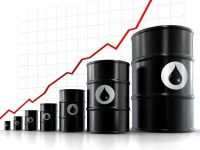
Inflation threat is active now after being dormant for few weeks. This time it is the rising crude price which is a potential source for price rise in the country. Crude prices are increasing in the international market due to political tensions on Iran and the Brent prices has touched $125/ barrel mark towards the end of the last week.
So far the positive sentiment in the economy especially in the stock market was built around the softening monetary policy expectations. The rational for comfortable monetary policy expectation indeed is the declining inflation trend. It was expected that given a stable and low level of inflation and the resultant reduced interest rate, investment will come back to accelerate growth. This means that even amidst recession pressure in the global economy, India can stand alone based on vibrant performance of the domestic economy.
At present, fuel prices in India are adjusted to the international crude price of around $90 per barrel. In the wake of crude prices wandering in the high ranges of $125-140, fuel price in the country will be reset upwards causing spiraling prices. This possibility is very strong once European Union stops purchasing crude from Iran and the resulting tension in the straits of Hormus by July this year. Definitely, oil prices in the coming months may dance with the tune of US policy on Iran. Of course, international crude market has entered into another phase of uncertainty, posing macroeconomic threats on import dependent emerging economies like India.
The time for rising crude prices to be converted into higher domestic fuel price is not later than the completion of the scheduled elections in states. There is every chance for the government to increase fuel prices on non-petrol items as part of the general budget itself. This is necessary to make its finances safe. So, crude prices and inflation are making a comeback as the macroeconomic risk factors for the Indian economy.










